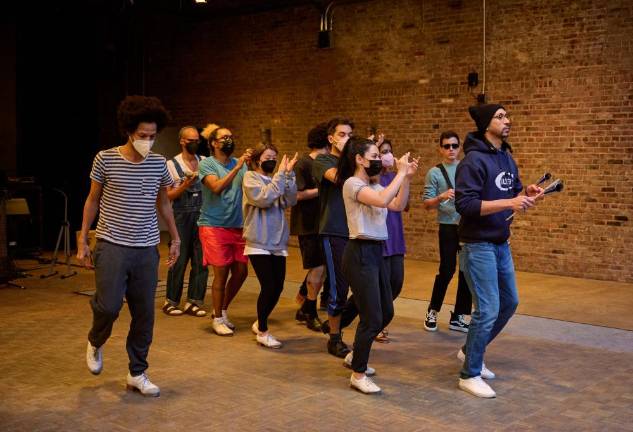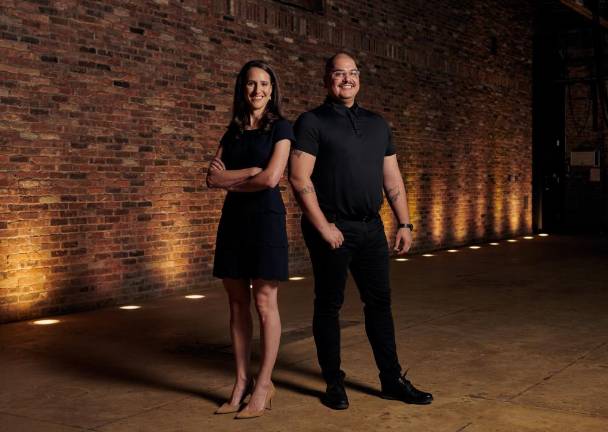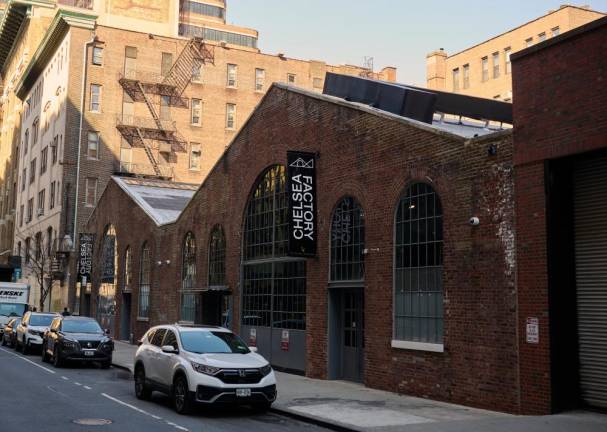Chelsea Factory Welcomes Artists In
A new arts center in a historic West Chelsea building supports NYC creators and cultural organizations



From a garage built to house factory equipment in 1914, to a photographer’s studio, a dance company, then events venue, the historic West Chelsea building with the weathered-brick façade and gabled roofs, has once again been transformed to meet the needs of the time.
Chelsea Factory, the brand-new arts center housed at 547 West 26th Street, is designed for the artists of New York City, a place where they can create anew and be supported as they move beyond the crushing restraints of the pandemic.
The project is the vision of Jim Herbert, executive chairman and founder of First Republic Bank, who said in a recent press release that the center was founded to accelerate the recovery for New York City artists and cultural organizations so they can “pursue ambitious ideas with financial and creative freedom.”
Executive director, Lauren Kiel, added that, Herbert, a longtime supporter of artists and art institutions in New York, saw the impact the pandemic had on the art sector with “companies closing, shows getting canceled” and saw the opportunity to help.
“To take this incredible piece of real estate that has been on the scene in Chelsea for over a hundred years, and for the first time ever, truly open its doors and its mission to serve many different New Yorkers – artists, ensembles, art organizations and community groups,” she said.
“A Response to the Pandemic”
The center is multidisciplinary in its programming “across genres – so dance, music, theater, but also food, fashion, tech and visual arts” can be presented, said managing director Donald Borror.
“Really at the heart of Chelsea Factory’s mission is that we are a response to the pandemic,” Borror said. “And our goal is to provide subsidized space and resources to artists across genres.”
The spacious 14,000 square-foot space “is a flexible, modular, configuration” that can be configured to meet the programming needs of a group or organization. Divided into two primary spaces, a smaller west side and a more formal east side where mainstage performances are presented.
The different streams of programming include a resident artist program where selected artists are provided with various forms of support for a year; partnerships with organizations such as The Joyce Theater that now have some of their dance performances at Chelsea Factory, and with the New Victory Theater for upcoming family programming, among others, Kiel said. And with the center only starting operation since January, they anticipate lots more exciting collaborations in the near future. Operation of the center is planned for an initial five-year period.
“I think the very exciting thing about Chelsea Factory is the multi-disciplinary nature of the work that goes on here,” Kiel said. “We see this opportunity to have artists, creators, entrepreneurs, from across the creative arts to meet one another, and we hope – especially being founded as an organization that is helping us move beyond the pandemic – we also become a place where artists can once again find community, in person, together.”